In 2007, the Ottawa Senators appeared in their very first Stanley Cup Final. Although they lost in five games to the bruising Anaheim Ducks, it was the best the modern franchise had ever done and they were poised to repeat as dominant forces in the Eastern Conference. Unfortunately, the team slumped, despite changing very little of their roster. They failed to show the same kind of dominance as they had a season prior and were eliminated in the first round by the lower-seeded Buffalo Sabres.
Adding to their struggles was the issue of star defenseman Wade Redden. He was up for a big pay raise after yet another 30+ point season, yet the Senators were reluctant to commit to him long term. Redden frustratedly refused and chose to test the open market, leaving the team without a bona fide powerplay quarterback. Then there was their goaltending – after helping the Senators to the Cup Final, Ray Emery put up a sub-.900 save percentage, and backup Martin Gerber wasn’t much better.
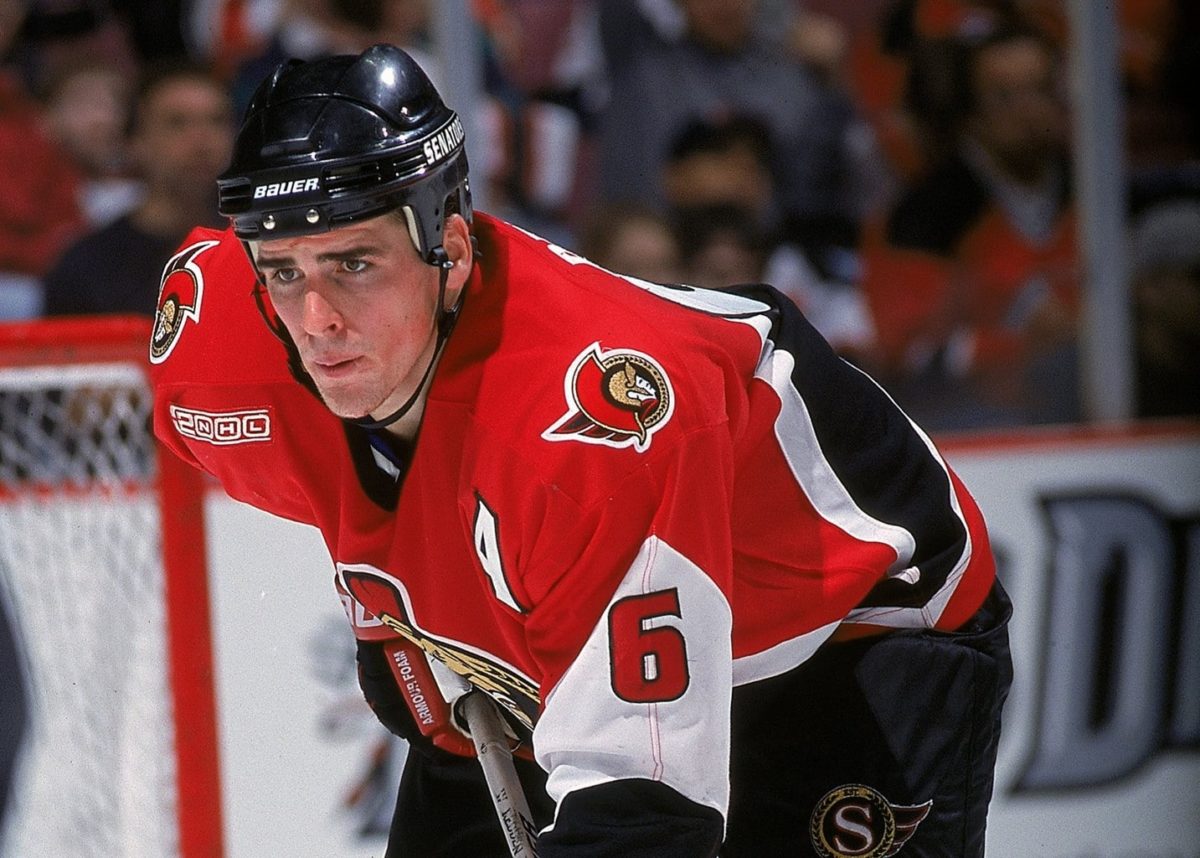
The silver lining to the season was that the Senators were selected to host the 2008 draft, giving them the opportunity to make a big splash and greatly boost their prospect pool in front of a home crowd. They also had a new scouting team to head up the draft. Bryan Murray, who always had a good eye for talent, had assumed the role of general manager, stepping back from the position of head coach, although he would replace coach John Paddock mid-season.
They also had a new Director of Amateur Scouting in Pierre Dorian, a longtime scout with the Montreal Canadiens and New York Rangers, along with a new crack team of amateur scouts, specifically Swede Anders Forsberg and former Western Hockey League coach Bob Lowes.
Whereas previously the Senators had gone for big, safe, North American prospects, specifically from the NCAA development programs, the last three first-round picks had yet to make an impact on the team. As Jim O’Brien, Nick Foligno, and Brian Lee developed slowly, other, riskier picks were already making their mark in the NHL. So, a new, bolder strategy was employed, with a greater focus on European prospects and less of a focus on the draft rankings.
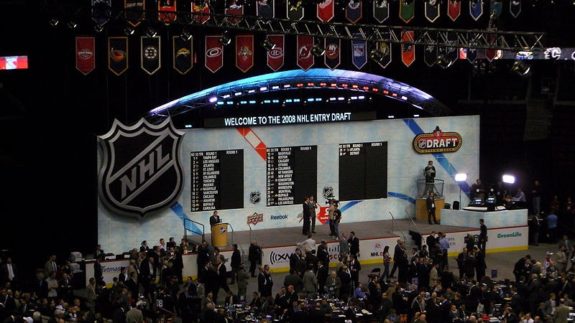
The strategy initially was criticized, especially after the first couple picks, but the results were far better than anyone could have hoped. 2008’s draft class redefined the Senators, and the scouts responsible for the selections went on to influence many more selections for the Sens, helping them come away with several highly-talented Europeans and underrated Western players. While it wasn’t the flashiest of drafts, it was the perfect mix of stars and depth pieces, and it turned the Senators back into a competitive team.
Other Senators’ Draft Reviews:
Early Rounds (1-2)
The 2008 draft class was seen as a good group, albeit not a great one. Steven Stamkos was the easy choice for first overall after a 105-point campaign with the Sarnia Sting. After that, though, was a large group of highly-talented defensemen that were drawing a lot of interest, headlined by Drew Doughty, Zach Bogosian, and Alex Pietrangelo.
Many speculated that the Senators should shore up their goaltending situation, as the tandem of Emery and Martin Gerber had been very inconsistent. But, on the advice of Forsberg, they decided to go off the board with a bold trade and a relatively obscure prospect from his homeland of Sweden. As it would happen, they came away with one of the best players in the 2008 draft.
Round 1, 15th Overall – Erik Karlsson, D (Frolunda Jrs., SuperElit)
As expected, the Tampa Bay Lightning grabbed Stamkos with the first pick, and then Doughty, Bogosian, and Pietrangelo were selected second, third, and fourth – no surprises there, either. But when it came time for the Senators to make their selection, Forsberg pushed the team to go for an underrated Swedish defender. He was so sure of his potential that the Senators decided to switch picks with the Nashville Predators, sending their 18th selection and a third-rounder in exchange for the 15th pick. With it, they selected Erik Karlsson.
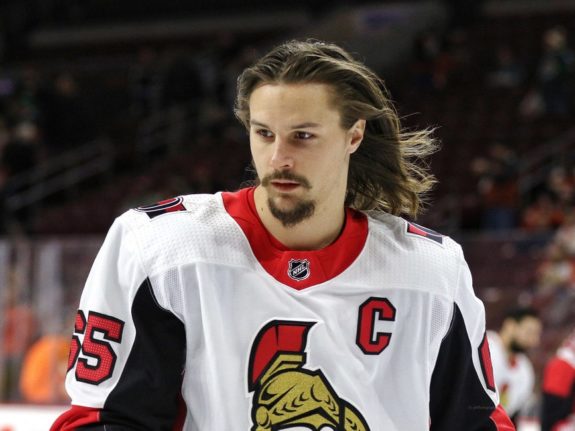
At the time, the pick wasn’t all that popular. The European crop wasn’t believed to be very strong and many analysts had slated Karlsson, ranked 4th among them, to go near the end of the first round. He had lit up the SuperElit Swedish junior league with 37 points in 38 games, but others saw issues with his defensive abilities as well as with his size and strength. It was a massive reach for a Senators squad who needed help in many areas. But thanks to Forsberg, they had observed Karlsson quite a bit, and the more they saw, the more they liked.
When we talked to Anders at that time about Erik Karlsson, we knew his size and strength (or lack thereof) and ability, but we also knew quite a bit about where he was from, the type of commitment he had made to become a hockey player, what the perception was over there. Anders worked with a lot of young players in the development program over there in Sweden, so we got to know them personally.
Bryan Murray on drafting Karlsson (from ‘NHL draft 2012: Senators really like their Swedes’, National Post – 06/22/12)
Karlsson ended up being better than anyone could have imagined. Just two seasons after his draft, he made his NHL debut and showed that he could be the successor to Redden on the Senators’ blue line. Over nine seasons with the team, he scored 518 points and set a team point record for defensemen with 78 points in 2011-12, and then broke it in 2015-16 with 82 points. He’s arguably one of the greatest defensemen ever to wear the red, white, and black, and one of the best offensive defensemen of the post-lockout NHL.
Related: Blackhawks’ 2014 Draft: The One That Sent Them Awry
Were the 2008 draft redone today, there’s no question that he would be a top-3 pick; Karlsson has the second-highest point total from anyone taken in that draft year. Yet the Senators stole him away at 15, far higher than anyone would have picked him. It may be one of the best picks in franchise history.
Missed Opportunity: None
Round 2, 42nd Overall – Patrick Wiercioch, D (Omaha Lancers, USHL)
Back in 2006, the Senators had a difficult decision to make. Young star Martin Havlat was a restricted free agent, but the team was too close to the salary cap for comfort. Ottawa tried to sign the Czech winger to a low-cost, long-term deal, but Havlat refused to re-sign for more than a season, hoping to get a bigger payday somewhere else. So, in an effort to get something in return, they flipped him to the Chicago Blackhawks in a three-way deal with the San Jose Sharks for prospects Josh Hennessy and Michal Barinka, defenseman Tom Preissing, and a 2008 second-round pick.
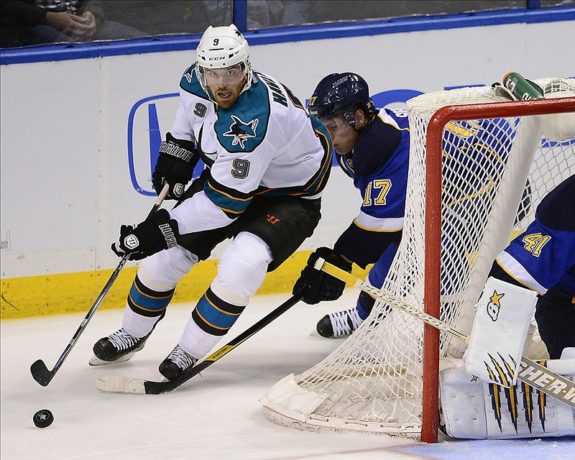
While the return seemed good at the time – it prompted the Senators to trade their original 2008 second-rounder to the Phoenix Coyotes for Oleg Saprykin – the end result was lackluster. Preissing only stayed for a season before signing with the Los Angeles Kings and both prospects combined for seven NHL games over their careers. All that remained was the second-round pick, and maybe with that in mind, they swung for the fences and grabbed defender Patrick Wiercioch, ranked 119th by the Central Scouting Service (CSS) with their 42nd pick.
Related: Senators History: 5 Longest Playoff Games
Initially, it appeared the 6-foot-4 defenseman could save this deal. He was an NCAA All-Star at the University of Denver in 2008-09 and 2009-10, and in his first two full NHL seasons, he was second among defensemen in scoring with 19 and 23 points. Wiercioch had all the makings of a second-round steal, yet frequent injuries began to slow him down and when his contract expired in 2016-17, he was allowed to walk. He signed with the Colorado Avalanche, but still only appeared in a career-high 57 games. Wiercioch spent all of 2018-19 in the AHL, then decided to try his luck in Europe, where he continues to play.
Missed Opportunity: Derek Stepan, C – Drafted 51st by the New York Rangers
Just after the Senators selected Wiercioch, the New York Rangers took a big chance on Derek Stepan. He had climbed up the CSS’s rankings to the 72nd spot after scoring 111 points in just 60 games, but as he was still playing high school prep hockey, many had overlooked the lanky centerman. Those that had observed him saw his 6-foot-0 and 168-pound frame as too small for the NHL.
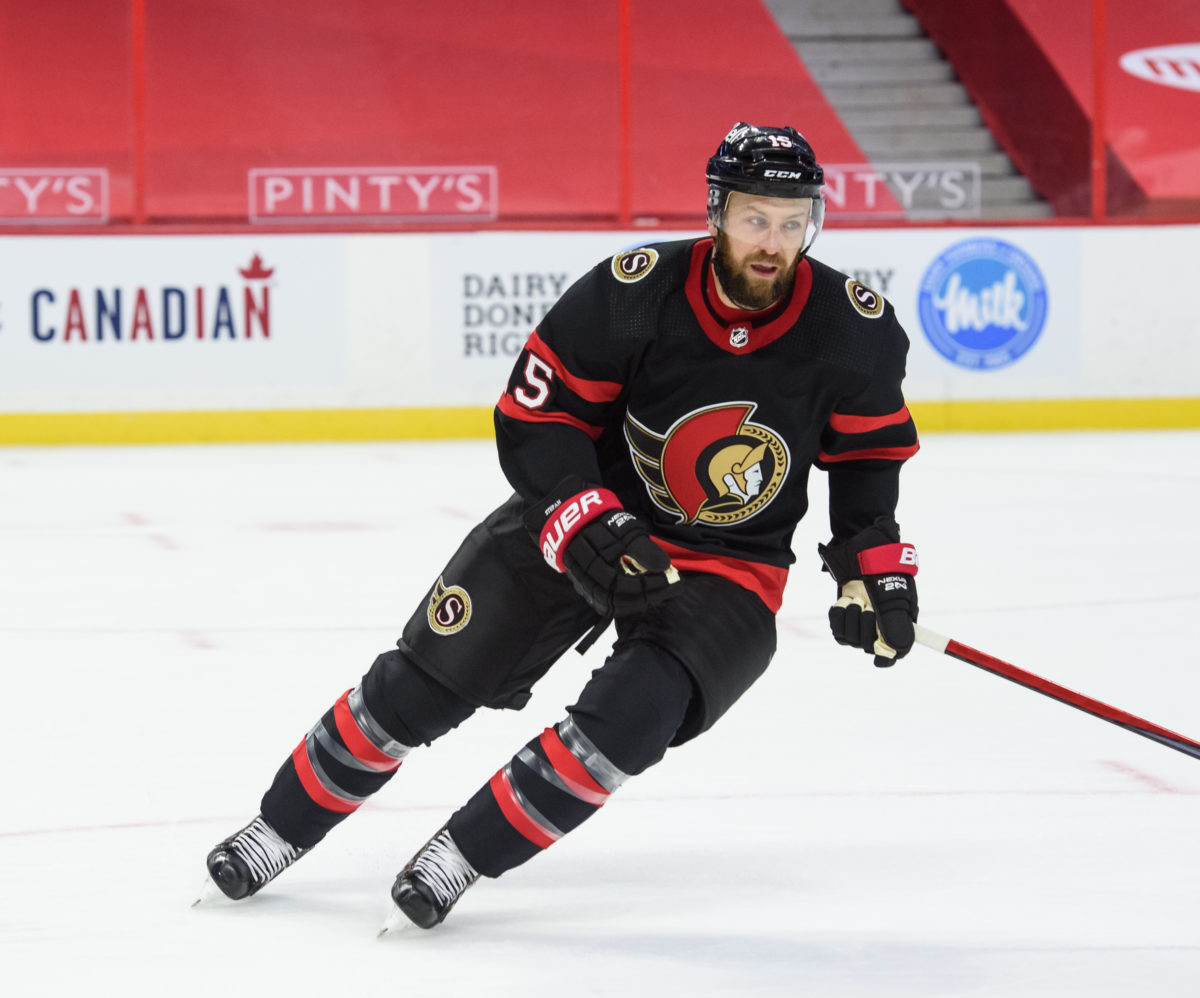
Yet, like the Senators, the Rangers knew they had a hidden gem. Stepan continued to perform well at the University of Wisconsin but really made a name for himself on the international stage, where he captained the U20 American team to a gold medal in 2010. He made his NHL debut in 2010-11 and scored 21 goals and 45 points in his rookie season. Stepan went on to record over 50 points six times in his career. Though age has begun to take a toll on him, Stepan became a valued veteran member of a young Arizona Coyotes team.
Middle Rounds (3-5)
Round 3, 79th Overall – Zack Smith, LW (Swift Current Broncos, WHL)
Smith entered the 2008 draft having been passed over twice before. Prior to 2007-08, his highest point total with the Broncos was just 31 points and 130 penalty minutes. But in his 20-year-old season, he was named captain and he broke out, leading his team with 70 points and another 10 in 12 playoff appearances. It was enough to help them advance to the Conference Semifinal, their best finish since 2002. His grit and leadership evidently caught the eye of the Senators and newly-hired WHL scout Lowes, and they grabbed the overage forward with their third pick.
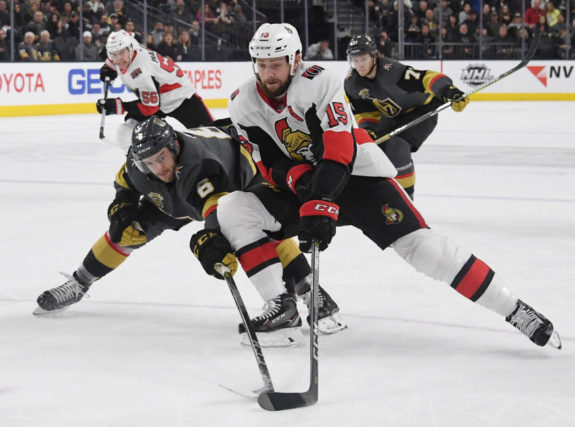
Smith debuted in the American Hockey League the following season and gradually worked his way into the Senators’ lineup, earning more and more call-ups while consistently producing in the AHL. Finally, in 2011-12, he played his first full NHL season and scored 14 goals and 26 points while adding 98 penalty minutes on a team that lacked grit. He soon became a fan-favourite, thanks to his leadership and tenacity. Unfortunately, in 2019-20, he was traded to the Blackhawks in an effort to shed some salary, bringing his time in Ottawa to an end.
Missed Opportunity: Braden Holtby, G – Drafted 93rd by the Washington Capitals
Lowes’ knowledge of WHL players served the Senators well from 2008 to 2016, earning him a promotion to director of amateur scouting in 2014. His crowning achievement was pushing to pick Mark Stone with the 178th pick in 2010. But he missed a couple of gems in 2008, most notably Braden Holtby, who played for the WHL’s Saskatoon Blades. Ranked fourth among North American goalies, he had begun to slip in the draft, and by the third round, nine other goalies had been selected ahead of him.
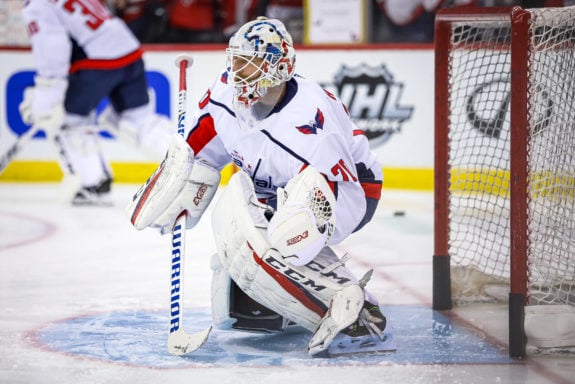
The Washington Capitals took a chance on the big, raw goalie early in the fourth round and in the very next season, Holtby was suddenly one of the best goalies in the WHL. Since then, he has become one of the NHL’s most decorated netminders of the last decade, becoming a five-time NHL All-Star and winning a Vezina Trophy in 2016, a Jennings Trophy in 2017, and the Stanley Cup in 2018. No other goalie taken in the 2008 draft can match that track record; Jake Allen, who claimed the Stanley Cup in 2019, is the only other one to win any sort of NHL Trophy from his draft class.
Round 4, 109th Overall – André Petersson, RW (HV71 Jrs., Sweden)
Petersson had all the makings of a draft steal. Ranked 19th among European prospects by the CSS, he fell into the fourth round before getting selected, despite leading the Swedish U18 team with four goals and eight points, which he shared with the New Jersey Devils’ 2008 first-round pick, Mattias Tedenby. Even his transition to North America was good; he scored 44 points in his first AHL season and earned a single-game call-up to Ottawa. But it was the only NHL game he appeared in – a hip injury ended his season in 2012-13, and a trade to the Anaheim Ducks saw him buried in the minors. With his contract up in 2014, he decided to return to Europe, where he still plays.
Missed Opportunity: Mattias Ekholm, D – Drafted 102nd by the Nashville Predators in 2009
Europeans got a tough break in 2008. Only seven were selected in the first round, and two of them – Mikkel Boedker and Luca Sbisa – were already playing in North America. Of the 55 Europeans taken, only seven played over 200 NHL games, and just five surpassed 100 points. However, there was some hidden talent way down the draft lists and had the Senators been a bit bolder, maybe they could have taken another European defenseman, Mattias Ekholm.
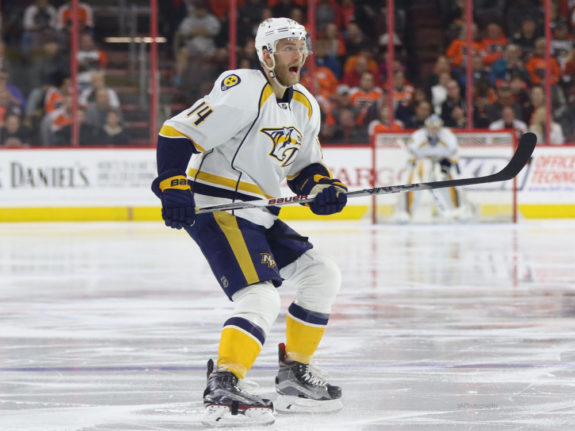
There was a lot for the Senators to like about Ekholm. He had played with Karlsson and Pettersson on the Swedish U-18 team, stood 6-foot-4, and weighed in nearly at 200-pounds. But he was still very young – he had just turned 18 in May – and didn’t look great against the older competition in the Swedish Hockey League. So, Ekholm went undrafted in 2008, having to wait until the fourth round of the 2009 draft to hear his name called. The Predators are sure glad he was available, though, as he’s become one of the team’s top-pairing defenders alongside another underrated European pick from the 2008 draft, Roman Josi.
Round 4, 119th Overall – Derek Grant, C (Langley Chiefs, BCHL)
In the 2007 draft, after taking Ben Blood in the fourth round, the Senators seemed to run out of prospects that interested them. Still owning three picks, they traded away their fifth and two seventh-round picks to the Lightning in exchange for a 2008 fourth-round pick. A year later, the Senators took Derek Grant, a 6-foot-3 centerman who had just come off a 63-point rookie season in the BCHL, finishing 20th in league scoring. He had plenty of potential but also the ability to fit in nearly anywhere in the lineup thanks to his NHL size and strength.
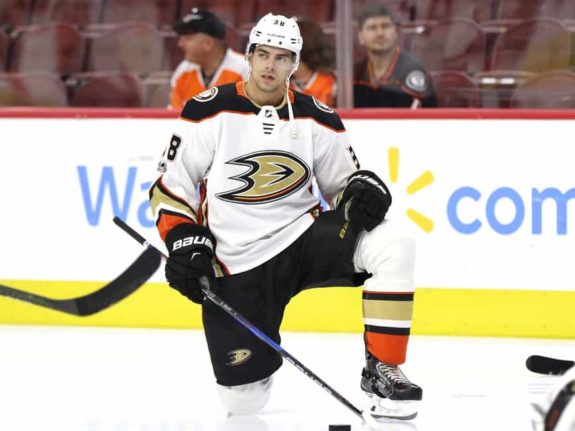
Grant joined the Binghamton Senators late in 2010-11 after two successful seasons with Michigan State Univerisity and helped them claim the AHL’s Calder Cup. It was a great way to start off his professional career, but the combination of being moved all over the lineup and a shoulder injury caused him to struggle over the following season, and after 60 games, he scored just 23 points.
The Senators called him up early in 2012-13, but after five games without a point, Grant was returned to the minors for the remainder of the season. In 2013-14, he managed 20 games and two assists before being sent down.
He never was called back up to the Senators. After spending the entire 2014-15 season in the AHL, Grant signed with the Calgary Flames as a free agent. However, that went much the same way as before, and he jumped to the Sabres, Predators, and finally the Ducks, where he finally stuck around on an NHL lineup. In 2017-18, he had his best NHL season to date, scoring 24 points over 66 games. Since then, he’s joined the Philadelphia Flyers and had four points in seven games before the 2019-20 season was paused.
Missed Opportunity: Matt Calvert, LW – Drafted 127th by the Columbus Blue Jackets
It may seem that a player who’s never scored more than 26 points in an NHL season is not a candidate for a missed opportunity, but Calvert has been a valuable secondary scorer on every team he’s played on. In 2008, he was ranked 45th among North American skaters after a 64-point season but wasn’t picked until 127th by the Columbus Blue Jackets. One reason was that some scouts wondered if his totals were due to playing alongside phenom Brayden Schenn, who led the team with 71 points as a 17-year-old.
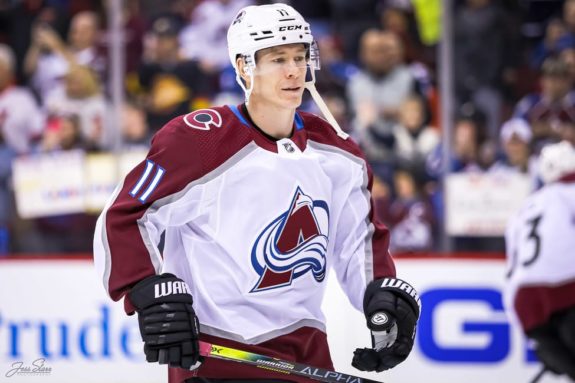
Two seasons later, Schenn made his NHL debut after going 5th overall to the Los Angeles Kings, leaving Calvert to take over scoring on the Brandon Wheat Kings. Surprisingly, he proved to be more than capable, finishing the season with 47 goals and 99 points in 68 games and tying Schenn, who returned to the team after a single game in the NHL. After graduating from the WHL, Calvert established himself as a reliable depth scorer and leader in both the AHL and NHL; in the 2018 Playoffs, he led the Blue Jackets with three goals in six games. Calvert signed with the Colorado Avalanche in 2018 and prior to the 2019-20 season being shortened, was on pace to set a single-season record, scoring 25 points in 50 games.
Round 5, 139th Overall – Mark Borowiecki, D (Smiths Falls Bears, CCHL)
Looking to add to their pool of defensemen, the Senators picked up Borowiecki with their fifth-round pick. Playing in the Ontario-based Central Canada Hockey League, he had fallen off the radar for many teams and wasn’t even ranked by the Central Scouting Service.
While Jr. A leagues like the BCHL and AJHL have produced numerous NHL stars like Cale Makar and Travis Zajac, the CCHL did not have the same recognition and had produced few NHL draft picks. Still, Borowiecki caught the Senators’ attention when he was named the league’s best defenseman after scoring 26 points in 46 games and added another 11 in 15 playoff appearances.
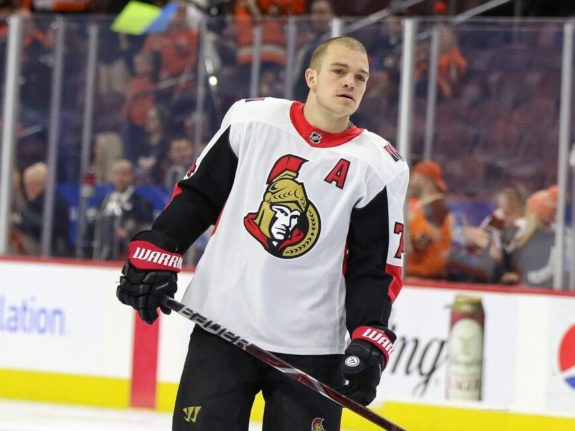
Borowiecki went on to play with Clarkson University for three seasons before inking a two-year entry-level deal in 2011. Never the most prolific scorer, he became known as a respected leader in the AHL. Over the next three seasons, he was a common call-up for the Senators, never playing more than a handful of games in a season, but in 2014-15, with the team’s defense severely depleted, he was added to the roster full-time. That season, he scored 11 points and put up 107 penalty minutes in 63 games from the bottom-six.
Related: Senators’ Coaching History
No one will argue that Borowiecki is a top-pairing defenseman. His career-high is just seven goals and 18 points, which he posted in 2019-20. However, there is a reason he wears the ‘A’ on his jersey. For six seasons, he provided the Senators with grit and tenacity along with top-tier leadership.
Being from Ottawa, he seemed to be truly invested in the community and cared about being a positive role model. Although it seems like he’ll be moving on from the Senators next season, he’ll always be remembered for the time he stopped an armed robbery, retrieving stolen goods from a thief in Vancouver and earning him the nickname, “Boro-Cop.”
Missed Opportunity: Cam Atkinson, RW – Drafted 157th by the Blue Jackets
It’s tough to say the Senators missed an opportunity by selecting Borowiecki, as he’s been exactly what the team has needed these past seasons. But had they gone for Atkinson, it’s hard not to think their offense would be much different. In his draft year, he put up 63 points in 28 games with his high school team but failed to make Central Scouting’s final list, thanks to the league he played in and his diminutive size of 5-foot-8.
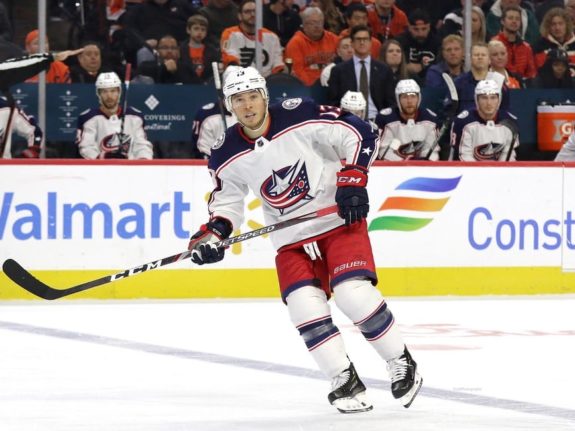
That didn’t stop him from catching a few scout’s eyes, though, and the Blue Jackets took a chance on him with their sixth-round pick. He broke into the NHL in 2011-12 and his since become one of the league’s most underrated goalscorers, hitting the 40-goal plateau in 2018-19.
Late Rounds (6-7)
Round 7, 199th Overall – Emil Sandin, LW (Bryans IF Gavle, SEL)
Seventh-round picks often are a chance for a team to take a big risk on a player without any negative repercussions. Sandin was just that for the Senators. Another 1988-born prospect, he had played very well in the SuperElit league, scoring 35 points in 28 games, and had also played 19 games in the SHL where he chipped in four assists. He was a strong playmaker and hard worker, but in the end, he decided to stay at home in Sweden and never signed with the Senators.
Missed Opportunity: Sergei Bobrovsky, G – undrafted
Bobrovsky entered the 2008 draft as the fifth-ranked European goalie, behind the likes of Jacob Markstrom (1st), Anders Lindback (3rd), and Mikko Koskinen (4th). He was playing in Russia’s top league and putting up decent numbers for a teenager and had also helped Russia win a bronze medal at the 2008 World Juniors. Yet he went unselected in both 2008 and 2009, leaving him as an undrafted free agent. The Flyers pounced on the talented Russian in 2010, inking him to an entry-level deal.
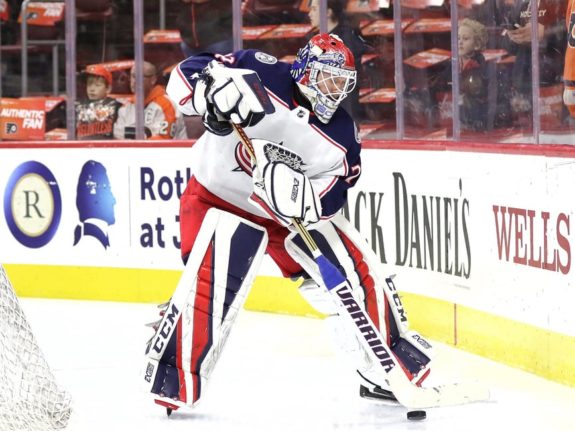
Bobrovsky initially struggled in his first two NHL seasons, putting up inconsistent numbers albeit with a winning record, which prompted the Flyers to trade him to the Blue Jackets for three draft picks.
In Columbus, Bobrovsky found his groove and quickly ascended to one of the NHL’s top goaltenders. He won the Vezina Trophy in his first season with the Blue Jackets and again in 2016-17, and was named an All-Star three times. While he’s struggled with the Florida Panthers after signing a massive deal in the 2019-20 offseason, he still is one of the premier netminders in the league. And the Senators could have picked him in 2008.
Overall Grade – B
Overall, the Senators’ picks from 2008 were a mixed bag. Out of their seven selections, only three would make a lasting impact on the team, and two of those players would fill depth roles for most of their careers. One struggled with injuries, which limited his effectiveness and career potential, and another never found his place in Ottawa. Taken altogether, the results were fairly average.
Latest Senators Content:
- Senators’ Recent Moves Promise a Return to the Playoffs
- NHL Rumors: Maple Leafs, Blue Jackets, Senators, Avalanche
- Senators Re-Shape Roster Ahead of Free Agency
- NHL Rumors: Flames, Oilers, Wild, Senators, Penguins, Canadiens
- Senators’ Dorion Is Clear Early Offseason Winner
Yet the reality was better than average. Karlsson redefined the Senators into the 2010s, and the combination of Smith and Boroweicki provided leadership and a solid depth core when they were needed most. Wiercioch and Petersson never made a big impact with the team, but had circumstances been different, they too could have become valuable key players as they fought to return to the Stanley Cup Final.
The 2008 draft may not have been the strongest or deepest class, but the Senators got exactly what they needed out of it, and it changed the franchise. In 2016-17, the Senators finally found success again in the playoffs, returning to the Conference Final for the first time in a decade. And it was all thanks to Karlsson and those that boldly drafted him 15th overall in 2008.